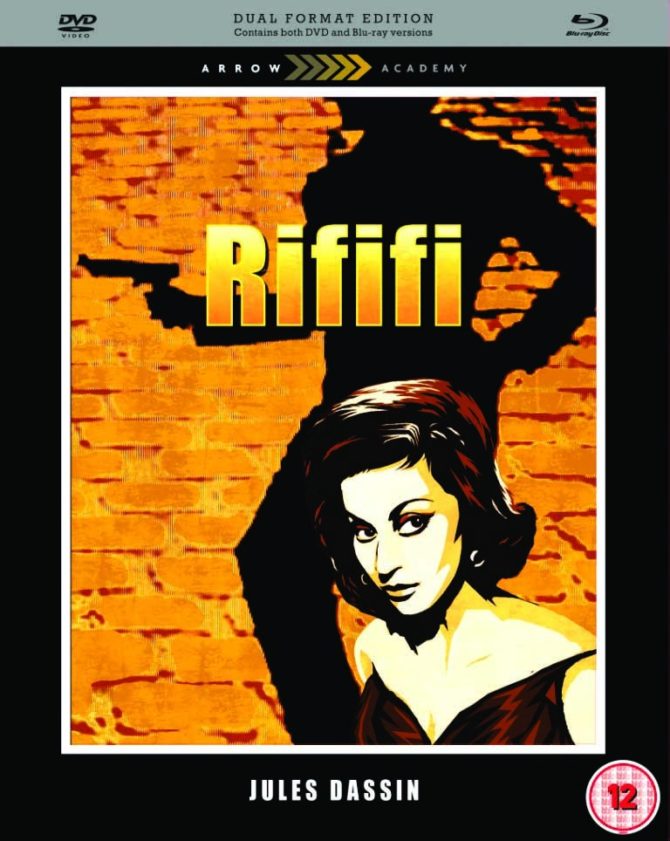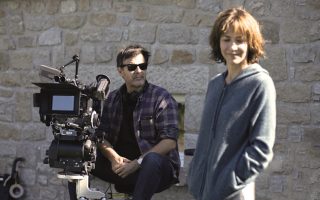Guns for Hire

Original Gangster
Pepe le Moko (Pepe le Moko), Julien Duvivier, 1937
This archetypal example of French cinema’s poetic realism, which is gritty and boasts flashes of cinematic trickery, is widely seen as a precursor to Film Noir. Starring the inimitable Jean Gabin in his fourth collaboration with director Duvivier, it’s the story of a gangster on the run from police in Algiers’ casbah, and who feels secure in this labyrinthine underworld. But the police inspector trailing him hopes to use Pepe’s new love for a Parisian tourist to lure his prey out of the safety zone. ‘Moko’ is the nickname for someone from Toulon, but the title was deemed unsuitably vague for American remakes; Algiers (1938) and musical Casbah (1948). The film made Gabin an international star and soon brought him to Jean Renoir’s attention, resulting in lead roles in La Grande Illusion and La Bête Humaine.
Transatlantic Origins
Du Rififi Chez les Hommes (Rififi), Jules Dassin, 1955
To get to grips with Franco-American gangster movie cross-referencing, it’s important to acknowledge the role of Julius ‘Jules’ Dassin. Prior to helming this tense showstopper, which would inspire the genre for decades – the heist sequence would later be ‘borrowed’ for Ocean’s Eleven and Mission: Impossible – Dassin was a successful cog in the Hollywood machine. That is until he became embroiled in the ‘red scare’. Forced to move to France, he utilised a meagre $20,000 budget to transform Auguste Le Breton’s slang-heavy novel into a three-act classic dealing with ‘one last job’, doomed love and low-life betrayal. The film bagged Dassin the 1956 Cannes Best Director prize and the plaudits of then critic François Truffaut, who declared it the best Noir he’d ever seen.
Don’t Mess with Delon
Le Cercle Rouge (The Red Circle), Jean-Pierre Melville, 1969
Has there been a more iconic celluloid gangster than ice-cold Alain Delon? Under the direction of genre master Jean-Pierre Melville, no actor epitomised the cold-eyed, fedora-and-trench coat, hard-as-nails screen depiction quite like Sceaux-born Delon. The impossibly charismatic and handsome actor, who was something of a muse to Melville, had already played strict-code contract killer Jef Costello in Le Samouraï – a character with traits later embodied by Ryan Gosling’s getaway man in Drive (2011)– but Le Cercle Rouge tops it. Set in Paris, it’s an understated robbery movie with bleak, washed out cinematography, sparse dialogue and an overt reference to Rififi in the heist sequence.
Style and Substance
Diva (Diva), Jean-Jacques Beneix, 1981
Based on a novel by Daniel Odier, this audacious, highly stylised gangster drama is a cult classic. It’s a strange, more highbrow concept for a thriller than the diamond-robbing plots of its gangster flick predecessors. Jules, a young courier, secretly records his opera-singing heroine in performance, an act that’s witnessed by Taiwanese gangsters who, unlike the fan, seek to exploit the recording for financial gain. Further complication comes when lowlifes believe Jules to be in possession of another, more damning tape. As the plot thickens, one of the iconic cinematic chase sequences ensues, involving a motorbike hurtling through the métro. Beneix entertains with the twisting narrative, dazzles with every visually arresting frame and enhances the mood with a stunning soundtrack.
Public Enemy
Mesrine (Mesrine: Killer Instinct and Mesrine: Public Enemy Number One), Jean-François Richet, 2008
This epic, critically lauded, two-part depiction of the life of one of France’s most infamous criminals proved that the French gangster genre still had serious legs in the 21st Century, attracting a bloodthirsty audience who adored anti-heroes. Vincent Cassel gave an electric performance as the man responsible for countless murders, bank robberies, burglaries and kidnappings in France and Canada, bolstered by a superb ensemble cast that includes Gérard Depardieu and Ludivine Sagnier. What sets Mesrine’s story apart is his ego-trip embracing of the media – while on the run, he’d give interviews and send his lawyer tender poems. These two films are must-sees of modern French cinema.
Others to watch:
Bob le Flambeur (Bob the Gambler), Jean-Pierre Melville, 1956
Tirez sur le Pianiste (Shoot the Piano Player), François Truffaut, 1960
Le Samouraï (The Samourai), Jean-Pierre Melville, 1967
Léon (Léon: The Professional), Luc Besson, 1994
Originally published in the August-September 2013 issue of France Today
Share to: Facebook Twitter LinkedIn Email
Leave a reply
Your email address will not be published. Required fields are marked *




REPLY